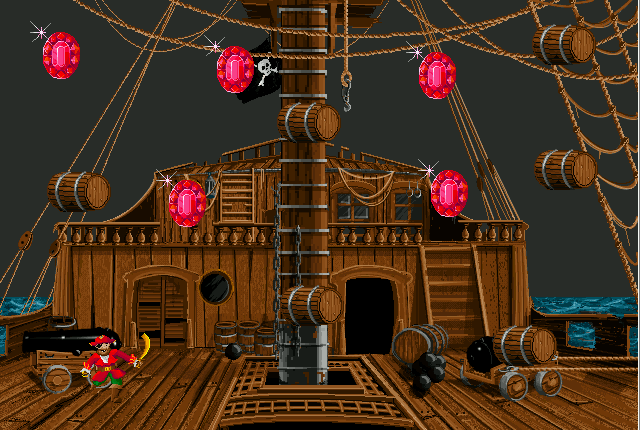Super Ultra Pirate Awesomeness
Tue, 06/11/2013 - 19:49 — TheJettSet27


Game File:
Use your arrow keys to move!
You are a pirate sailing on the seven seas.
Collect the jewels.
Drink the rum.
Be a pirate!
Press shift when you're done collecting.
This is the first game I have ever made - and it's pretty bad, but oh well!
Author:
TheJettSet27
Event Created For:
Made For:
An event






Comments
I like how the title is
I like how the title is almost a recursive acronym. SUPA!
Letting the user decide when they have won is an idea I find super-intriguing... though, I guess the decision may have been a result of newness to the program. Nonetheless, it's definitely something I'll think about in the future.
Hope to see more trainwrecks from you!
So it's basically the
So it's basically the opposite of Pretend You're Platforming?
Thanks everyone! And yeah, I
Thanks everyone!
And yeah, I had to make the game end when the user was done because I haven't done anything like this before.
I'll figure it out with some experimentation, though. And then there's Google.
Googling for KnP stuff might
Googling for KnP stuff might be hard considering how old the program is. I know quite a bit about KnP though. Snapman knows a lot too, but I haven't seen him around these parts in a while.
You can achieve the behavior you're looking for with something like this:

Note: I changed those "Make invisible" events into "Destroy" because that's generally the action you want to use when you want to get rid of an object. This is important because Klik & Play will only let you have up to ~256 objects living inside your game at a time.
In order to add multiple conditions to an event so that the actions are only performed when ALL the given conditions are true (like in this case), make an event, then right-click on the event's number in the left pane and choose "Add a new condition".
A word about those
A word about those conditions above:
All of those conditions ("X is overlapping Y", "Number of X = Y") are continuous. This means that as long as they are true, they will cause the listed actions to occur at 50 times a second. It doesn't matter in this example, but if you want an object collision to, for example, play a sound instead of causing the objects to disappear, using "is overlapping" will give you an earache since the sound will play 50 times a second. For collisions, "Collision between X and Y" will only fire as the objects begin to overlap, and not while they're still overlapping. In other cases, you can add a special condition called "Only one action when event loops".
This is probably over your head right now because you're just getting used to the program, but it's something to think about in the future.
lurking
Yeah, I'm still here, just lurking is all. Looks like you've got the KnP advice covered, though :-)
I don't remember ever using "Only one action when event loops". Was that some kind of inline mutual exclusivity thing?
I use "Only one action when
I use "Only one action when event loops" quite a bit. I _think_ it works like this?
- Did all the other conditions in this event evaluate to true in the last frame? If so, then it evaluates to false.
- Otherwise the condition evaluates to true.
When "Only one action when event loops" is the only condition, the event fires a single time and that's it. But in TGF1 and newer, which feature groups, you can stick it inside a group, and since events inside groups can be activated/deactivated, it will fire every time the group is (re)activated.
I think this is done on a per-event basis, not per-object, but I'm not 100% sure.
Thanks for the help! I'll
Thanks for the help!
I'll keep it in mind for my next game!
yeah
yeah i know a lot too, there's still sites out there that offer help for klik 'n' play. that's how i downloaded KNP in the first place!
thats also how i know how to make one.....